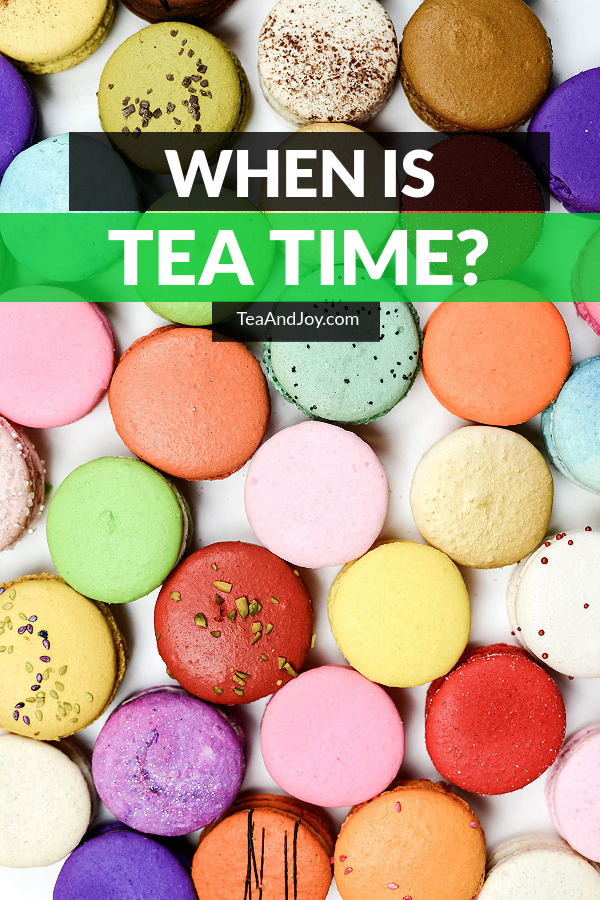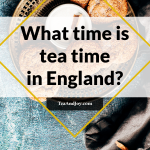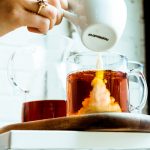Tea time? There are a few times through the day that can be referred to as tea time: the late morning around 11 am, late afternoon around 3-4 pm, or early evening around 6 pm.
As someone with English grandparents, one of the things I remember most fondly was tea time with my grandmother. Perhaps one of the most quintessential of the English customs is tea time.
After placing a napkin in my lap, I was taught how to gently stir what was in my little teacup (mine was always filled with juice as a child) and eat my scones like a lady. My grandmother would often serve Devonshire Cream along with cubes of sugar.
It’s always fun to pretend to be a grownup as a child; it’s even more fun with friends who are family.
In this article you'll find:
The History of English Tea Time
Catherine of Braganza
The custom of drinking tea was made popular during the reign of King Charles II. When Catherine of Braganza arrived in England from Portugal to marry the King in 1662, she brought tea with her.
Catherine had grown up drinking tea, and England soon caught on to this everyday beverage. But it wasn’t until the middle of the 19th century that English tea time became a tradition.
Anna, the Seventh Duchess of Bedford
Anna, the Seventh Duchess of Bedford, was used to the evening meal in her household being served rather late, around eight o’clock. This left a long time between lunch and dinner, and she found herself becoming hungry around four o’clock in the afternoon every day.
She began asking for a tray with tea, bread and butter, and cake to be brought to her rooms at this time. The Duchess soon invited her high society friends to join her in this new tea ritual, and the practice quickly spread through social circles. This is sometimes called low tea, as the Duchess’s ladies would sit low in their armchairs while drinking their tea.
Within the next two decades, the break for tea became an event had by English socialites and upper-class women. They were always properly dressed and wore gloves and hats for their afternoon tea which was held around four o’clock every day.
I remember going to London for the first time
I remember going to London for the first time, and after seeing the Changing of the Guards, and visiting Hampton Court, there was one more thing we needed to do. We had good, old-fashioned English tea time with tiny little teacups that looked like they came out of Downton Abbey.
But there is so much more to tea time in Britain than the pretty cups and cubes of sugar. Tea etiquette was extremely strict in the 19th century. Men were judged by the way they handled a teacup, and a possible suitor could easily be seen poorly if he was seen mishandling his spoon and saucer.
When Do the Brits Have Tea Time?
Elevenses
As the name implies, the first tea time of day occurs around eleven in the morning. This late morning tea involves a light snack of muffins or biscuits, with a hot cup of tea or coffee.
Popular items include lavender and lemon muffins, caraway seed cake, strawberry shortcake, or lemon tea cake.
The history of the elevenses isn’t as old as the history of traditional tea time. This custom seems to have gained popularity in the 20th century. But today, it is deep-seated in British culture.
Afternoon Tea Time
This is where the Duchess of Bedford comes in, as she is the one who really started this tradition with her afternoon hunger pangs.
Afternoon tea time in Britain is held around three or four o’clock in the afternoon. This is a time, like morning tea, that you are to mind your manners.
Pinkies down, friends. Movies have misled us.
As my grandmother taught me, you are to place your napkin neatly in your lap and stir your tea gently. And you never want to eat ravenously. Restraint is everything. And keep those pinkies down!
But don’t get too hung up on proper manners and trying not to make yourself look like a fool. Tea time in Britain is supposed to be relaxing. As long as you keep your napkin on your lap and both feet on the ground, you should be just fine.
Traditional afternoon tea consists of a wonderful selection of little sandwiches, like the thinly sliced cucumber sandwiches my grandmother would make. Scones are also served with cream and preserves. You will find cake and pastries and silver teapots along with the tiny teacups.
High Tea
Contrary to its name, high tea began with the lower class of people. In newly industrialized Britain, workers had to wait for the workday to be over before having tea.
Because this was later in the day, the tea was generally served with heartier dishes than just biscuits and cakes. Workers were tired after a long day of hard labor, and so the meal was hot and filling, and the strong tea was brewed to revive their spirits.
The name high tea was a way to keep it separate from afternoon tea, which was traditionally served in low chairs made for relaxing. High tea was often served at a work table with high-back chairs.
Where Can I Experience English Tea Time?
In the United Kingdom
If you are in Britain, just about every tearoom in the country offers tea time. But if you are in London and want the best experience for having a cuppa, several places stand out. You’ll find crustless finger sandwiches, dainty scones, cakes, macaroons.
Scoff ; Banter Tea Rooms serves Lavender Dream and Rooibos Tiramisu brews, along with scones and other tasty options.
You can sample more than 50 different teas and light meals in a beautiful atmosphere at the Candella Tea Room in Kensington.
Several London hotels, such as Claridges, The Ritz, and The Dorchester, offer a quintessential high tea experience.
In the United States
If you are in the United States, there are plenty of delightful places that serve British Tea, such as Robinson’s Tea Room, in Stony Brook, New York, 600 Main Bed ; Breakfast and Victorian Tea Room in Toms River, New Jersey, or Sweet Afton Tea Room, in Plymouth, Michigan.
Conclusion
Tea time is an umbrella term that is used for a few different English meals, usually had with tea and food of some kind. Tea time remains one of Britain’s most well-known customs.




